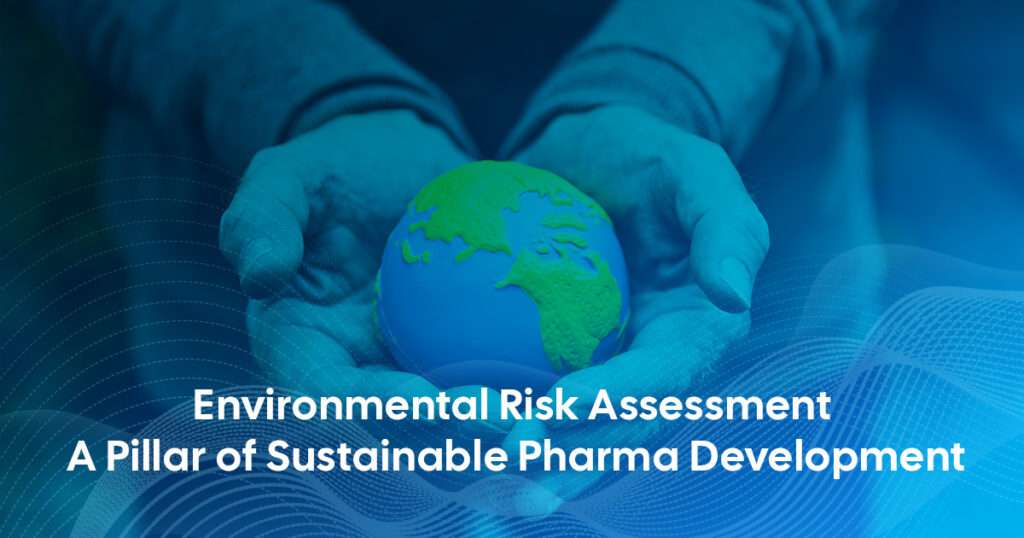When a new drug is developed, its environmental journey does not end at the pharmacy shelf. Active pharmaceutical ingredients (APIs) can enter water bodies and soils through manufacturing discharges, patient excretion, or improper disposal. If not addressed, these residues may disrupt ecosystems and pose long-term environmental risks.
Environmental Risk Assessment (ERA) has thus become an integral part of sustainable pharmaceutical development, balancing human health needs with ecological protection. This blog explores how ERA contributes to sustainability across the entire pharmaceutical life cycle—from early research and development to product disposal.
Understanding Environmental Risk Assessment (ERA)
Environmental risk analysis systematically evaluates the potential impacts of pharmaceuticals on ecosystems once they enter environmental compartments such as water or soil. It assesses how drug compounds persist, bioaccumulate, and exert toxicity on organisms. By applying scientific methodologies, developers can predict and mitigate environmental risks proactively, rather than reactively.
ERA involves laboratory and field studies designed to assess the persistence, toxicity, and bioaccumulation potential of pharmaceutical compounds. For example, companies may evaluate the biodegradability of chemicals in water or soil, test their toxicity to aquatic organisms, and model the predicted environmental concentration (PEC) of a drug. These PEC values are compared to predicted no-effect concentrations (PNEC)—the concentration at which no adverse environmental effects are expected. A PEC/PNEC ratio below 1 indicates low environmental risk, whereas a value equal to or greater than 1 suggests a potential ecological hazard.
Key Components of an ERA
A comprehensive environmental risk assessment typically includes the following elements:
- Physicochemical testing: Evaluates solubility, stability, and other intrinsic properties of the pharmaceutical compound.
- Aquatic ecotoxicology: Involves toxicity tests on species across different trophic levels, including fish, aquatic invertebrates, and algae.
- Environmental fate studies: Examine how the compound degrades in water, sediment, and soil, including processes in sewage treatment plants.
- Bioaccumulation screening: Assesses whether the compound tends to accumulate in the tissues of living organisms and move up the food chain.
- Phase-wise or tiered assessment: Regulatory agencies often apply a stepwise approach (such as Phase I/II assessments under EMA guidance) to determine the extent of testing required based on predicted exposure levels.
Regulatory Expectations for ERA
Globally, regulatory authorities increasingly require ERA as part of the drug approval process. In the European Union (EU), a legally binding ERA is mandatory for most new human medicinal products, following detailed scientific guidance from the European Medicines Agency (EMA). Similarly, in the United States, the Food and Drug Administration (FDA), under the National Environmental Policy Act (NEPA), mandates environmental assessments for new drug applications unless the action is categorically excluded.
While terminology differs—’phase-wise’ under the EMA and ‘tiered’ under the FDA—the principles remain similar: to evaluate a drug’s environmental fate, toxicity, and exposure potential systematically, ensuring minimal ecological impact.
Advances in Environmental Risk Assessment Methodologies
Recent advancements are reshaping the ERA landscape. Computational models and in-silico prediction tools are increasingly being used to complement or even replace traditional animal testing, offering faster and often more precise risk projections. Additionally, integrating green chemistry principles with ERA findings is fostering innovation in drug development, encouraging the design of environmentally benign pharmaceuticals from the outset.
Industry leaders are recognizing that proactive environmental stewardship offers competitive advantages. Early integration of ERA into product development not only ensures compliance but also enhances corporate reputation, reduces future regulatory hurdles, and supports long-term sustainability goals.
Conclusion
Environmental Risk Assessment has evolved from a regulatory formality into a cornerstone of responsible and sustainable pharmaceutical development. By identifying potential environmental hazards early in the drug development process, ERA enables informed and responsible decision-making throughout the pharmaceutical lifecycle. As scientific tools and methodologies continue to advance, the role of ERA in balancing human health needs with ecological protection will become even more critical.
For pharmaceutical companies committed to sustainable practices, ERA represents not just a compliance requirement but a strategic opportunity to lead the industry toward greater environmental responsibility.
About DDReg Pharma
At DDReg Pharma, we recognize the growing importance of integrating environmental considerations into drug development strategies. In addition to regulatory and pharmacovigilance services, we offer specialized clinical regulatory support to assist with Clinical Trial Applications in the United States and other global markets.
Connect with our experts today to learn more about sustainable regulatory practices.
Read more insights from our experts: A Complete Guide to Regulatory Pathways for Biosimilars in the EU and US.

